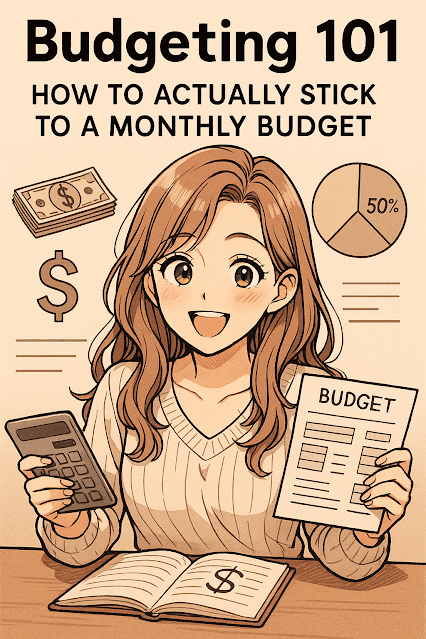Creating a monthly budget is one thing—sticking to it is a whole different challenge.
Whether you’re saving for a dream vacation, paying off debt, or trying to gain control over your financial life, a solid budget is the foundation. But how do you go from planning to actually following through?
In this guide, we’ll walk you through step-by-step strategies to not only build a realistic monthly budget but, more importantly, to stick to it.
Why Most Budgets Fail
Before diving into the how-to, let’s quickly understand why many budgets fall apart:
-
Too restrictive: Budgets that cut out all “fun” spending are harder to maintain.
-
Unrealistic goals: Setting goals that don’t match your income or lifestyle leads to burnout.
-
Lack of tracking: Without monitoring, it's easy to overspend.
-
No emergency buffer: Unexpected costs can throw your entire budget off course.
Step 1: Know Your Numbers
Start with clarity:
-
Income: Calculate your monthly net (after-tax) income.
-
Fixed expenses: Rent, insurance, utilities.
-
Variable expenses: Groceries, transport, entertainment.
-
Debts and savings: Include loan payments and money put toward savings or investments.
Use a spreadsheet or a budgeting app like YNAB, Mint, or EveryDollar.
Step 2: Use the 50/30/20 Budgeting Rule
A proven, simple method:
-
50% needs: Rent, groceries, bills
-
30% wants: Dining out, hobbies
-
20% savings & debt repayment: Emergency fund, credit cards, student loans
Adjust percentages to suit your goals but start here for balance.
Step 3: Automate Your Budget
Automation is key to sticking to a budget.
-
Set up automatic transfers to savings/investment accounts on payday.
-
Use bill autopay to avoid late fees.
-
Create spending alerts or use prepaid debit cards for discretionary spending.
Step 4: Track Every Expense for 30 Days
If you’ve never tracked your spending, this step will be eye-opening.
-
Use apps like PocketGuard or Goodbudget.
-
Or go analog with a budget journal.
-
Track daily to avoid end-of-month surprises.
Awareness is half the battle.
Step 5: Build in Flexibility
Rigid budgets don’t last.
-
Allow for a “fun fund” or misc. category.
-
Reevaluate and adjust your budget monthly.
-
If you overspend one category, reduce another.
Think of your budget as a living document—not set in stone.
Step 6: Plan for the Unplanned
Build an emergency fund.
-
Start with $500, then aim for 3–6 months of expenses.
-
Keep it separate from your checking account.
This buffer ensures a car repair doesn’t destroy your progress.
Step 7: Create Visual Goals
Budgeting is easier when tied to visual, emotional goals.
-
Print a picture of your vacation destination.
-
Use progress bars for debt payoff.
-
Keep your “why” front and center.
This motivates you to stay on course even when it’s hard.
Frequently Asked Questions (FAQ)
Q1: How much should I be saving each month?
Ideally, aim for 20% of your net income. If that’s too high, start with 5–10% and build up.
Q2: What if I have an irregular income?
Use your average monthly income from the past 6–12 months. Base your budget on the lowest expected amount to be safe.
Q3: Should I budget weekly or monthly?
Monthly is common, but weekly check-ins help reinforce habits and make adjustments easier.
Q4: Can I use cash envelopes for budgeting?
Yes. The envelope method works well, especially for discretionary spending like dining or entertainment.
Conclusion: A Budget Is a Plan, Not a Punishment
Budgeting isn't about restriction—it’s about freedom and clarity. With a bit of planning, tracking, and flexibility, you can gain full control of your finances and make your money work for you.
Start today. Track one week of expenses and set a simple monthly goal. That first small step might change your financial life.

